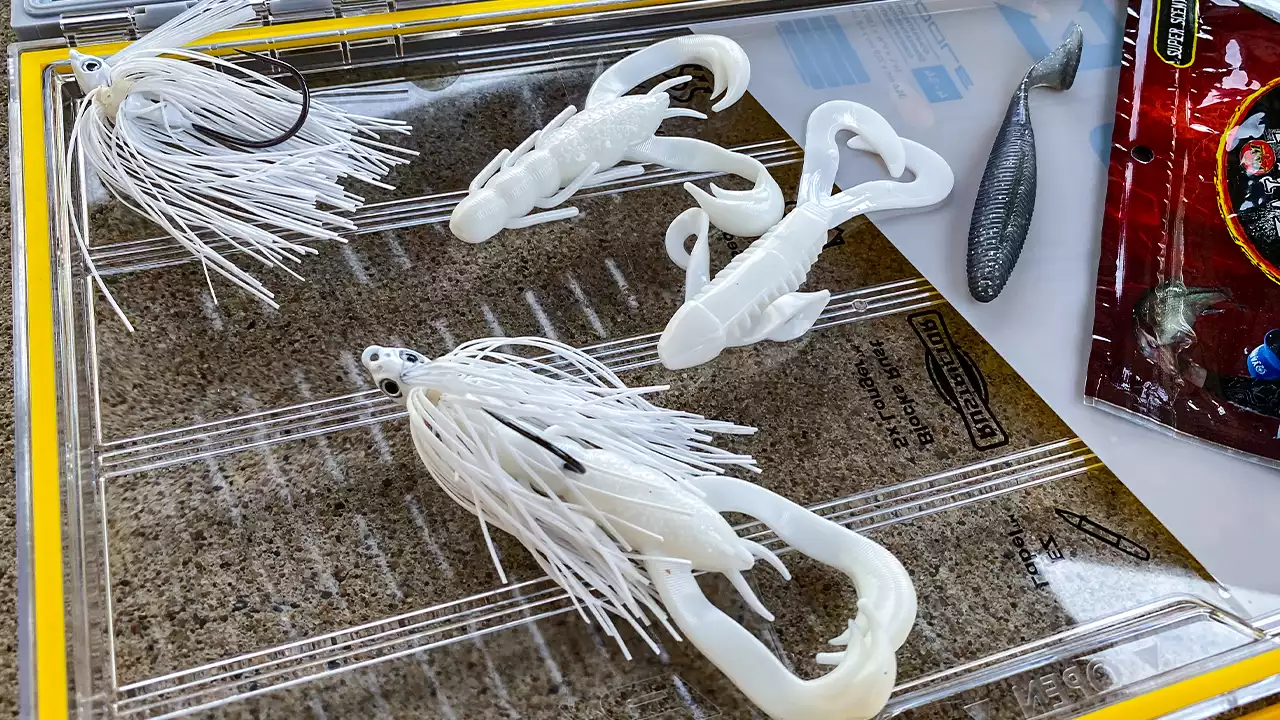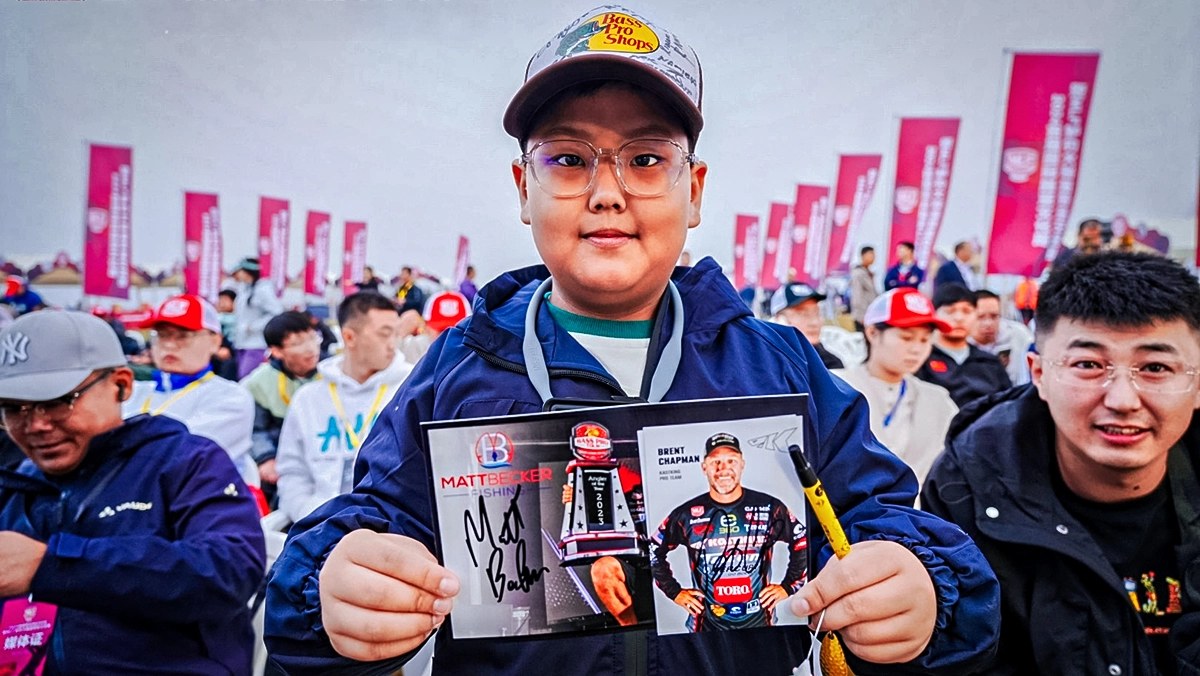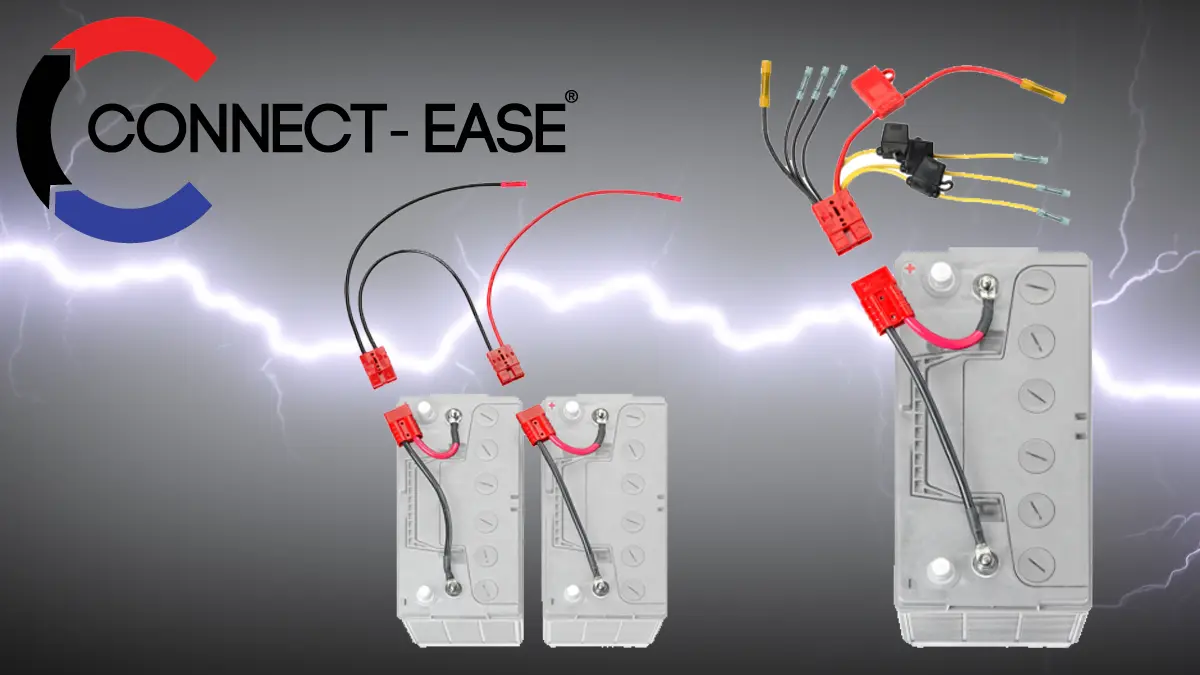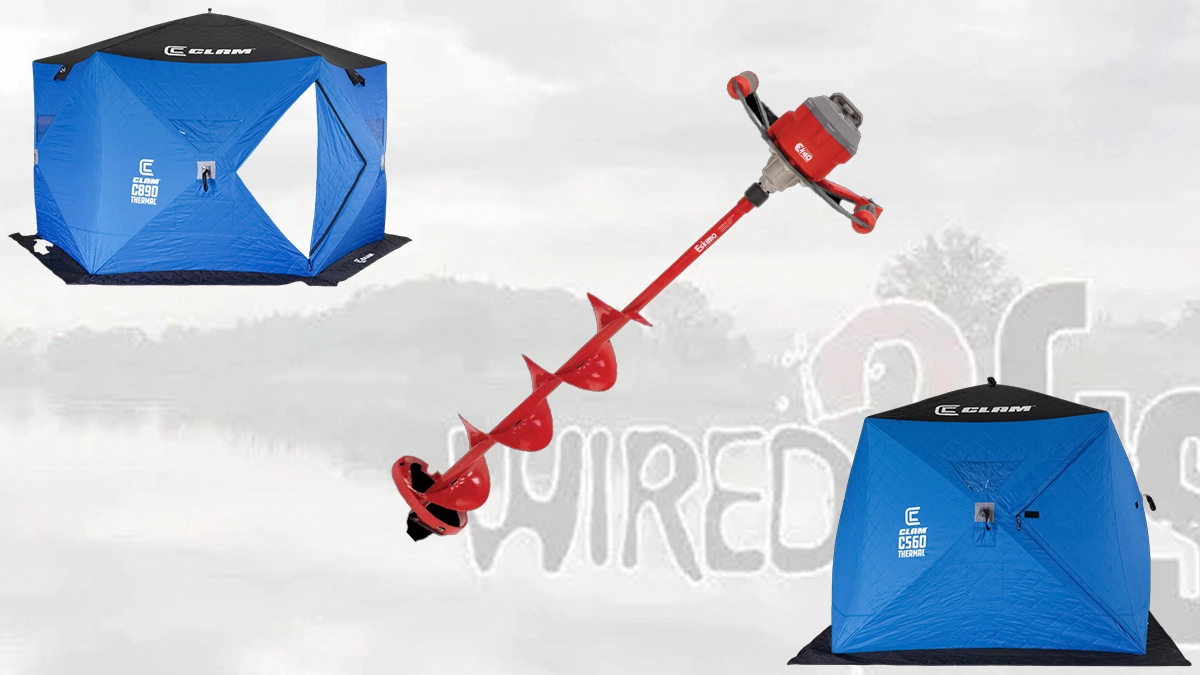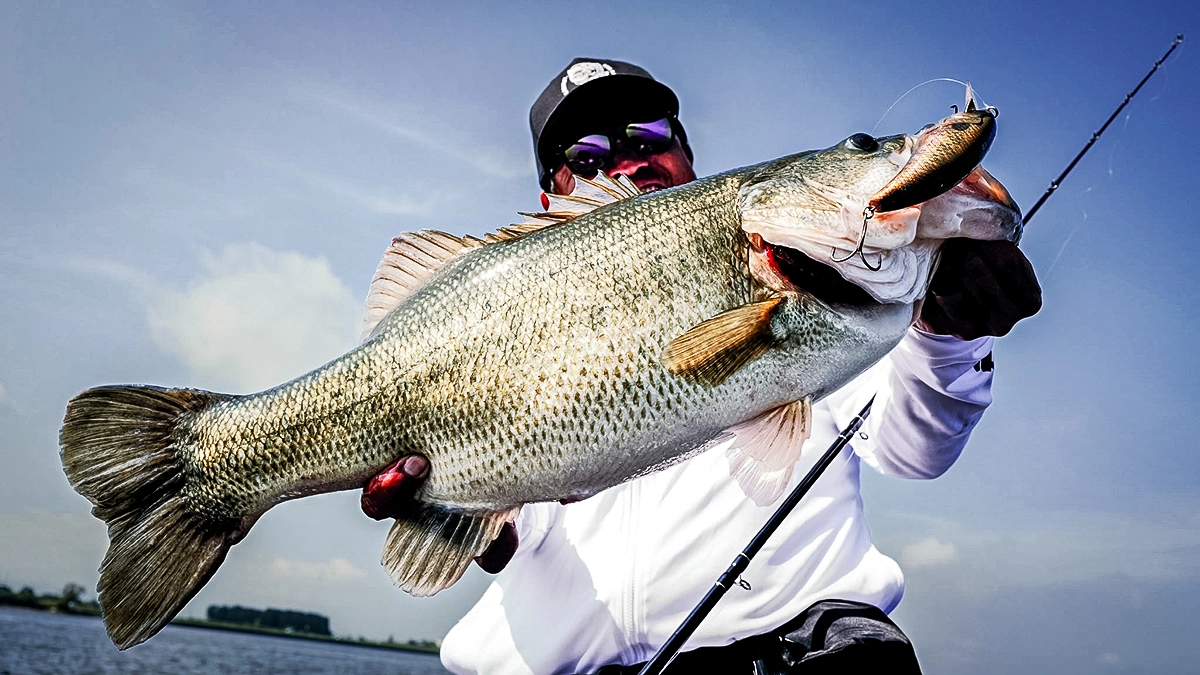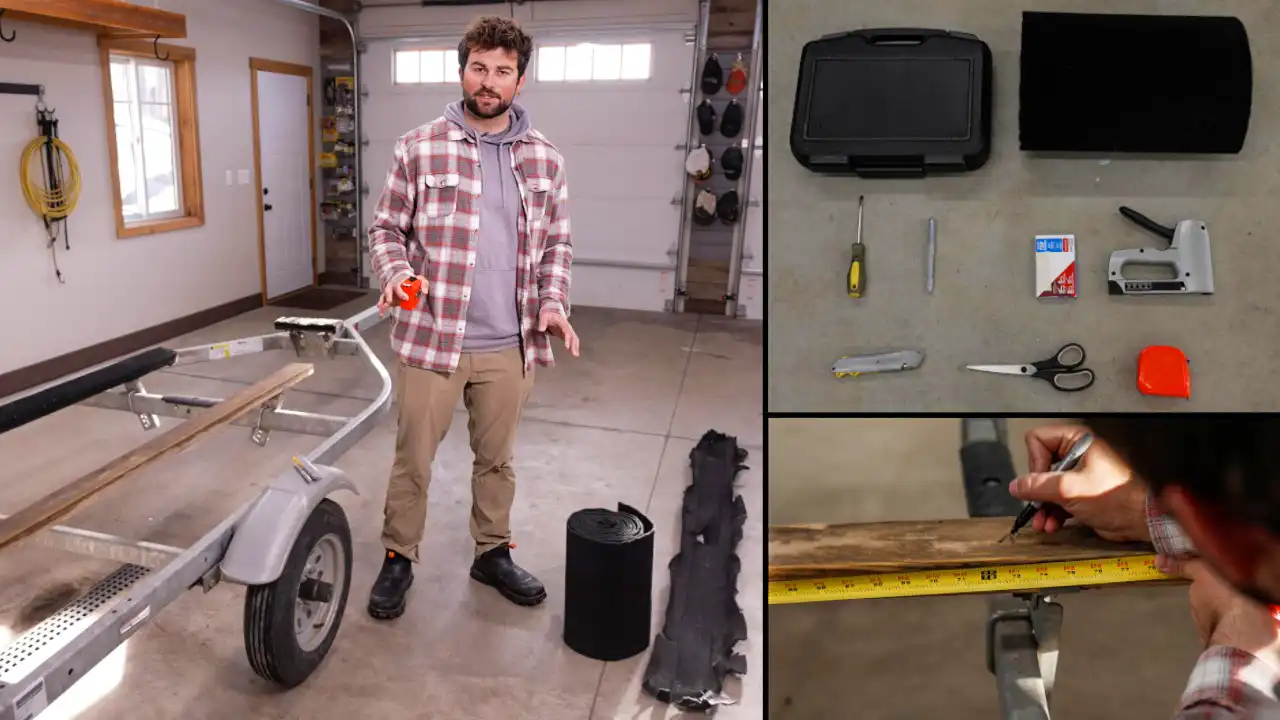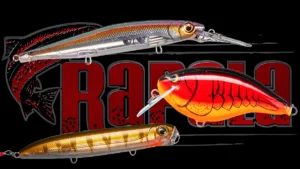It’s common for anglers to get consumed picking the perfect jig but overlook the bass jig trailers. Cliff Pace thinks this is a big mistake, as choosing the right jig trailer for the situation can make a jig presentation better or worse. He discusses the importance of bass jig trailers on lure performance and how to choose the best trailer style for your fishing environment.
Pace frames his discussion around a typical 3/8-ounce swim jig and how 4 core trailer styles impact running depth. His top 4 trailer list covers his favorite trailer styles and baits, from most to least resistance. Or in other words, the best shallow to deeper water performing trailers.
- Bulky craw trailers. Pace ranks a common 4-inch flapping-style craw as the best option to optimize shallow water performance. A bulky plastic coupled with the lift created from dual craws increases water resistance and adds significant lift, a plus when working the bait over the top of grass beds, mud, and other shallow water habitats. A V&M Wild Thang Craw is his go-to in this scenario.
- Twin tail grub. Scaling back slightly on mass and action allows a twin tail grub-style bait to run somewhat deeper without changing jigs or altering retrieve speed while still delivering a bulky jig appearance. Technically a creature bait, the V&M J-Bug accomplishes this task for Pace.
- Paddle tail swimbait. A streamlined paddle tail swimbait has excellent flash and vibration while mimicking baitfish yet has less water resistance, allowing the jig to run deeper. Pace recommends a Jackall Rhythm Wave Swimbait (3.8”) or something similar.
- Straight-tailed plastic. Straight minnow-profiled plastics such as soft jerkbaits have the least amount of action and water resistance. They allow jigs and other skirted moving baits to run the least impeded through the water column. The featured Jackall Rhythm Wag Soft Jerkbait fits the bill in this situation.
So all things being equal, consider changing your jig trailer before cutting off your go-to jig to adjust running depth. There are times, however, when you want abundant trailer action and more running depth. In this case, you may need to upsize your jig weight to counteract the additional lift imparted by the trailer.


